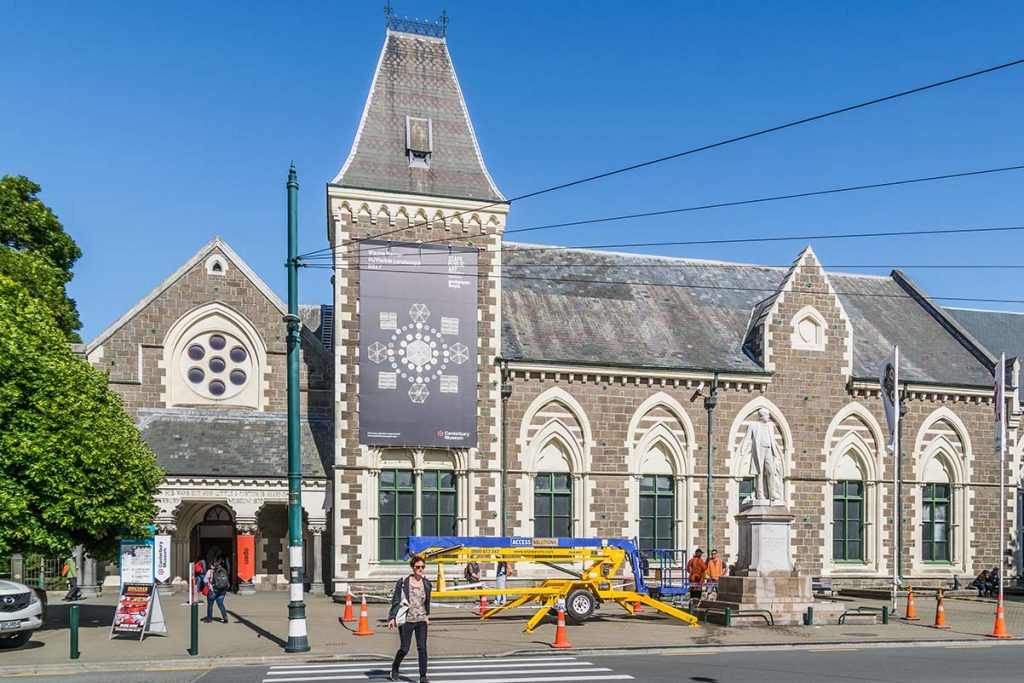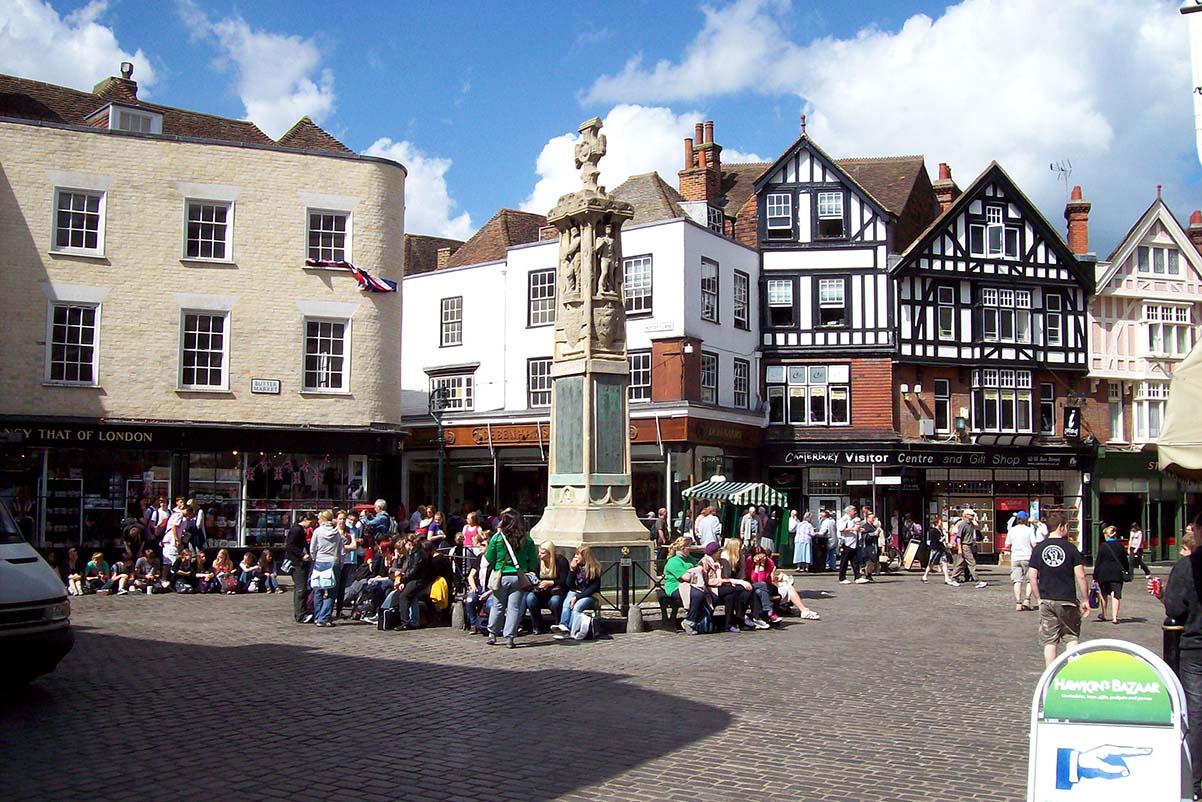I have always had a special fascination with ancient towns. In England, there is one place I have longed to visit, and that is Canterbury. This place, steeped in historical significance, is renowned not only for its world-famous Canterbury Cathedral but also for many hidden treasures waiting to be explored.
First Arrival in Canterbury: Fusion of History and Culture
The moment I arrived in Canterbury, it felt like stepping through a tunnel of time. Before me unfolded a scene where antiquity and modernity coalesce. Canterbury Cathedral stands as a witness through time, its grand and solemn architecture not only symbolizing the city but also embodying the living fossil of British history and culture. Standing in the Cathedral Square, surrounded by winding alleys and cobblestone paths, it seemed as if every corner exuded the profound traces of years gone by and a deep cultural heritage.
Entering this sea of history, I felt transported to the heart of a medieval town. The towering arches of the cathedral shine with ancient charm under the sunlight, while the surrounding alleys conceal countless stories and secrets. These narrow passages twist and turn, their stone paths bearing the imprint of time, as if narrating the past glory and the passage of ages.
Visiting Canterbury Cathedral: Architectural Grandeur and Historical Reverie
Canterbury Cathedral is not just a religious structure; it is a symbol of British history and culture. Stepping inside the cathedral, I instantly entered another dimension. The soaring vaults, illuminated by light, appeared particularly magnificent and solemn. These stone vaults, crafted by skilled artisans, not only support the entire structure but also vividly showcase medieval architectural craftsmanship. Each stone, meticulously carved, bears tales of legend and religious symbolism, seemingly recounting ancient legends and the depth of faith.
Standing in the center of the cathedral and gazing up at its soaring spire, I couldn’t help but marvel at the greatness and infinity of human architectural skill. This spire, reaching over 70 meters high, like a pointer thrusting into the sky, serves as a bridge between humanity and God. Despite enduring centuries, the cathedral’s architecture remains steadfast and majestic, its solidity and grandeur truly awe-inspiring.
The stained glass windows inside the cathedral are marvels of art. Through the colorful hues of these ancient glasses, biblical stories and traditional religious images are vividly portrayed. Each stained glass window has a unique story behind it, narrating tales of faith and hope, immersing visitors in a sacred and solemn atmosphere.
Within the cathedral’s interior space, the weighty sense of history and the depth of culture hit me profoundly. Whether it was the historical figures engraved on tombstones, the ancient altars, or the church decorations, each element evoked the countless religious rituals and historical events once held here. These imprints of history and cultural accumulation not only pay homage to the past but also constitute an essential part of today’s cultural heritage.
Canterbury Cathedral not only showcases the grandeur and sacredness of religious architecture but also serves as a paragon of British culture and art. Every detail exudes the sediment of time and the brilliance of wisdom, touching visitors deeply. Standing in the center of this ancient structure, I felt the flow of time and the continuity of civilization, a sensation that words cannot fully capture.
Corners of the Ancient Town: Cultural Secrets in the Alleyways
In the corners of Canterbury, hidden away in the alleyways, lie many undiscovered cultural secrets. Away from the bustling city center, I enjoy strolling along narrow and tranquil paths, where these alleys emanate tranquility and the aura of history.
For instance, I once stumbled upon an ancient art gallery in a lane called “St. Peter’s Street.” Stepping into the gallery, I was struck by the sight before me. It showcased works by local artists, ranging from traditional oil paintings to modern sculptures, each piece reflecting strong local characteristics and historical backgrounds. Some artworks depicted the daily life and scenery of Canterbury, and through the artists’ brushstrokes and carvings, I could feel the charm and uniqueness of this city.
In addition to the art gallery, Canterbury’s alleyways conceal many historical buildings and cultural sites. For example, “The Canterbury Tales” museum is nestled in a quiet alleyway. Here, through lifelike reconstructions and interactive displays, the museum vividly recreates the storylines and character images from Chaucer’s famous work “The Canterbury Tales.” Stepping into the museum feels like entering the medieval world depicted by Chaucer, with each display area vividly conveying the plot and atmosphere of the stories through sound, light, and props.
In another alleyway named “The Friars,” lies the site of an ancient monastery. Quiet and mysterious, this place with its ancient stone buildings and gardens shaded by greenery, gives one a glimpse into the lives and beliefs of medieval monks. Wandering through these ancient alleys, every corner may hold a cultural treasure that captures the imagination, prompting travelers to discover and explore endlessly.
Canterbury’s alleyways are not just passageways connecting various corners of the ancient town; they are also carriers of historical and cultural heritage. Each alleyway has its unique stories and backgrounds, and through these quiet streets, I felt the deep historical heritage and cultural accumulation of this city. These cultural treasures, though not as grand as the cathedral, add a unique charm and depth to Canterbury in their own way.
Savoring Local Cuisine: A Journey of Culinary Adventure
In Canterbury, traveling is not just about sightseeing but also an excellent opportunity to taste local cuisine. During my exploration of the old town, I happened upon a traditional English pub hidden deep in an alleyway. This pub may not be conspicuous, but it is a part of Canterbury’s culinary culture, providing me with a deeper understanding of this city.
Entering the pub, I was drawn to its typical English pub style. Wooden tables and chairs, an old bar counter, and photos hanging on the walls exuded the sediment of years and the flavor of history. The menu featured many classic English dishes such as the famous fish and chips and savory meat pies. I ordered a serving of fish and chips, a dish that was simple yet bursting with flavor. The fish was tender, the batter crispy, and accompanied by a rich sauce, each bite was filled with satisfaction and enjoyment.
What delighted me even more was chatting with local residents while dining. They shared many interesting food stories and local customs, introducing me to how traditional Canterbury foods reflect the locals’ love and attention to food. I heard about the techniques for making traditional meat pies and stories of preparing special foods and drinks during festivals. These exchanges not only broadened my culinary knowledge but also deepened my understanding of Canterbury’s cultural heritage and community spirit.

The Mysterious Veil of Ancient Buildings: Museums and Encounters with History
Besides Canterbury Cathedral, this ancient town also hides many treasure-like museums and historical relics, waiting for every visitor to explore them in detail. Canterbury Museum is one such place, housing a wealth of historical artifacts and exhibits that showcase the city’s development and cultural heritage from ancient times to the present.
Entering Canterbury Museum felt like traveling through the river of history. The museum’s interior is beautifully laid out, displaying a variety of artifacts and exhibits from ancient Roman times to the Middle Ages and modern era. In the historical artifacts section, I saw ancient pottery, bronze ware, and ceramics, revealing the lifestyle and cultural level of ancient Canterbury residents. Some exhibits even came from archaeological excavations, displaying the city’s development trajectory across different historical periods.
I was deeply drawn to some exhibitions in the thematic exhibition area that highlighted significant historical events and figures in Canterbury. For instance, the exhibition about Thomas Becket detailed the life and deeds of this important historical figure in Canterbury through artifacts, illustrations, and multimedia displays. Additionally, there were exhibitions about urban development, the Industrial Revolution period, and the impact of World Wars on Canterbury, with each exhibit carrying rich historical information and cultural significance of the city.
With the assistance of museum guides, I gained a deeper understanding of the stories and significance behind each exhibition area. They elaborated on the historical background and cultural value of each exhibit, providing me with a more comprehensive and profound insight into Canterbury’s history. Through these exhibits, I not only learned about the city’s urban development but also felt the city’s significant role and rich cultural diversity in the river of history.
Canterbury Museum is not just a place for collecting exhibits; it is also an important venue for showcasing and inheriting urban cultural heritage. Each visit allowed me to gain new understanding and insights into the history and culture of this ancient city. It provides visitors with a window to delve deeper into Canterbury’s urban development and cultural heritage, making it an indispensable part of understanding this city.
Harmonious Coexistence of Nature and Humanity: Urban Green Spaces in Canterbury
As a traveler who loves nature, I also discovered the green spaces in Canterbury’s urban area. From the cloister courtyard next to the cathedral to city parks and gardens, these green spaces not only add vitality to the city but also allow me to enjoy the dual blessings of nature and culture with local residents. On a sunny afternoon, I enjoyed walking in the city park, soaking up the sunshine and fresh air with families and their dogs, experiencing the harmonious coexistence of nature and culture. This scene of harmony deeply impressed me with Canterbury’s unique charm.
Canterbury at Nightfall: Cultural Night with Dazzling Lights
As night falls, Canterbury reveals a different charm. The buildings and historical monuments around the cathedral are bathed in soft light, creating a fairy tale world of history and culture. I enjoy strolling through the ancient streets at night, savoring the city’s unique tranquility and mystery. Sometimes, I choose to dine in a local pub or restaurant, chatting with friends, and experiencing the lively yet serene nights of Canterbury.
The Charm and Memories of Canterbury
Looking back on my journey in Canterbury, I am deeply moved by the profound historical heritage, rich cultural connotations, and unique urban charm of this ancient city. Canterbury Cathedral, with its grandeur and sacredness, stands as a symbol of British history and culture, while the winding alleys and hidden cultural treasures present a kaleidoscope of stories and secrets waiting to be discovered. Through encounters with local residents and the exploration of museums and green spaces, I gained a deeper understanding of Canterbury’s history, culture, and community spirit.

Canterbury is not just an ancient city but also a treasure trove of British history and culture. It allows travelers to experience the blend of tradition and modernity, the harmony of nature and humanity, and the profound cultural heritage through its architecture, art, cuisine, and lifestyle. This journey has left me with indelible memories and a longing to return, continuing to explore and discover the hidden charm and cultural essence of this ancient city.



